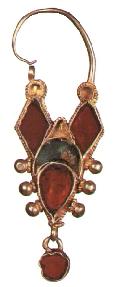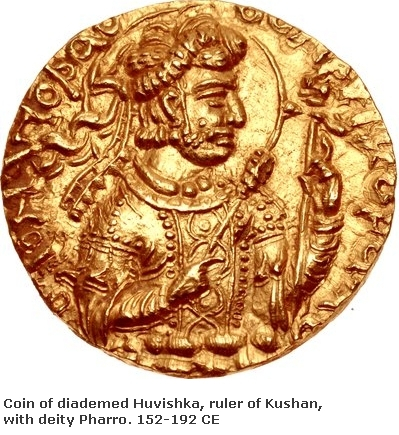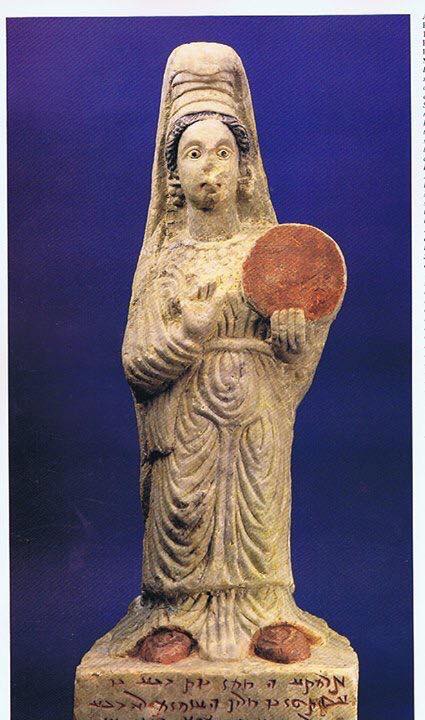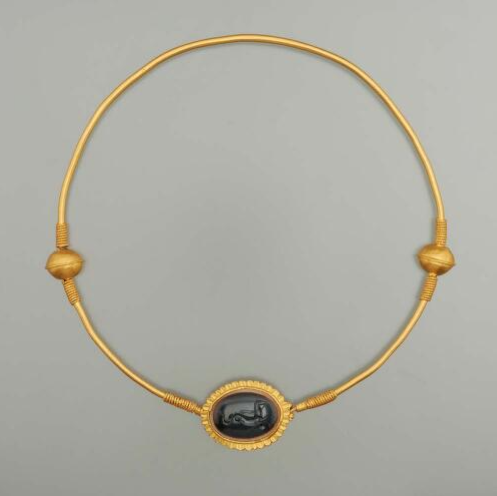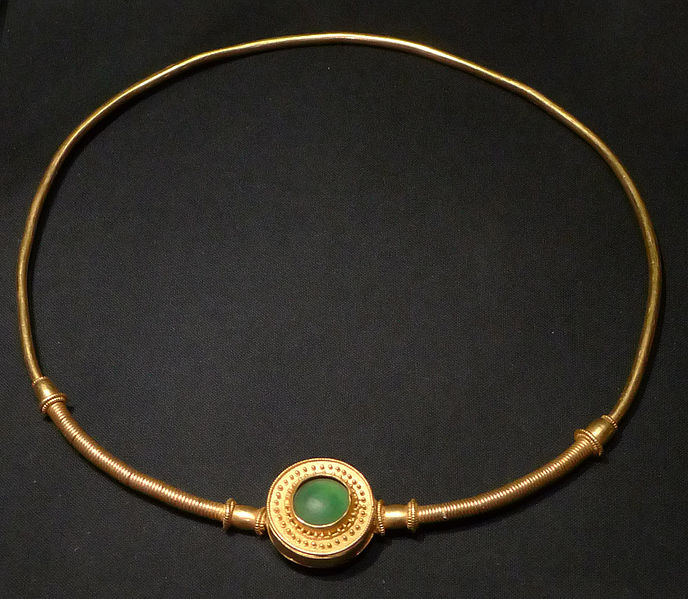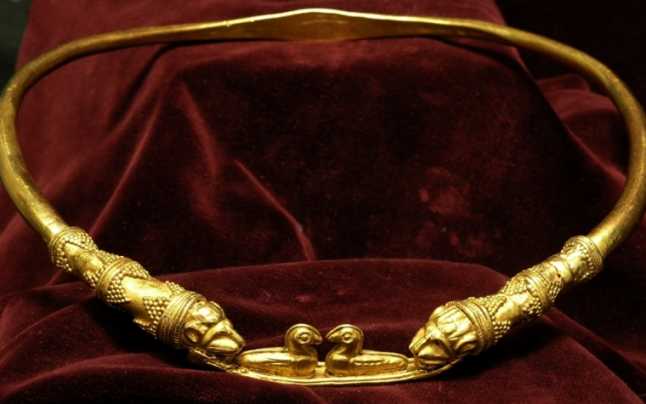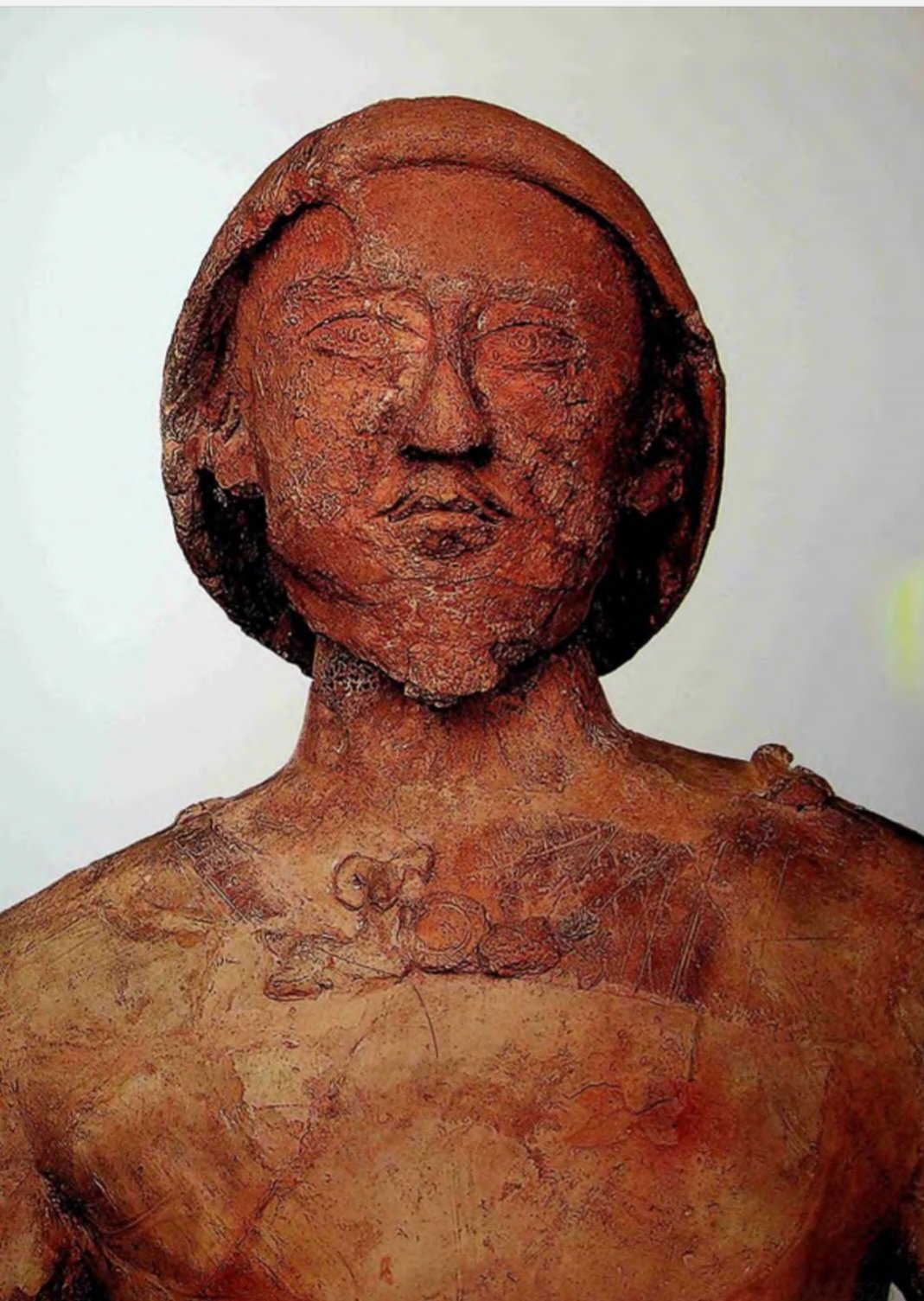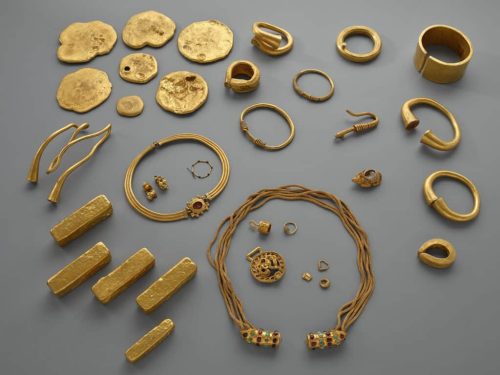
Dalverzintepa (Dalvarzin Tepe), in today Uzbekistan, was once a significant defensive site on the Surkhan Valley branch of the Silk Route and one of the most glorious Kushan cities of the age and an early capital for the Tokharian (Yue Chi) Turkic tribes.
The earliest settlement that arose here in the 2nd-3rd centuries BCE. Within the five sided city walls there are the remains of a Zoroastrian altar, Buddhist temple and a Bactrian shrine. Dalvarzin (d’al + varzin) from ancient Sogdian is translated as “scarlet, red hill”. According to the hypotheses of archaeologists, Dalverzintepa settlement was surrounded by a fortress wall, which was later destroyed by the Saxons in the 2nd century BCE, and was restored during the reign of the great Kushans (from the 1st century BCE to the 5th-6th century CE).
In 1972 during excavations, a group of archaeologists led by Galina Pugachenkova discovered the largest treasure of gold objects in the history of the region, weighing about 36 kg, dating back to the 1st century CE. Under the floor of room no. 13 in the House of a Rich Citizen students found a lot of gold bars and jewelry dated to the early Kushan Empire, the 115 gold items. The treasure was placed in a simple two-handed clay jug 34 cm high.

The treasure dates back to the 1st century, but earlier gems such as a gold necklace from the 2nd-1st centuries BCE have also been found among the jewelry. The necklace is made of three hollow rings, and has the central medallion with a carnelian intaglio with depiction of a head of Heracles in profile. Gemstone was probably re-used, the position of a carving suggests it was taken from a ring.

Another exceptional jewel, the gold men’s necklace. The five chains are connected at the ends by hollow cylinders decorated with turquoise and garnet. The clasp and (probably) big central part, medallion with a gemstone are missing. Similar necklaces we can see on the Gandhara sculptures of Buddha as Siddhartha and Bodhisattva.
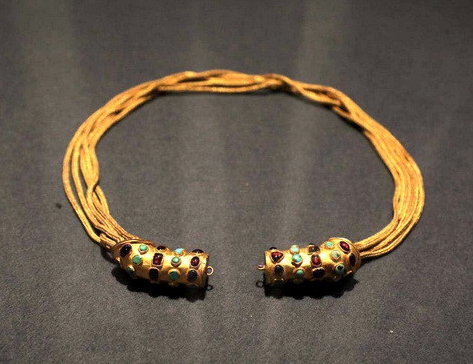


Other interesting finds from the Dalverzin Tepe treasure




Uzbekistan, Farkhadstroy, gold, H. 2,85 ; l. 1,16 cm.
Tashkent
Agency for Precious Metals under the Central Bank of the Republic of Uzbekistan, КP-55, КP-56
[after Francfort, H.-P. (2022)]

Uzbekistan, Yer Kurgan, 3rd-4th century. Gold, coquilleet turquoise, décor gravé et incrusté — H. 1,91 ; l. 4,48 ; pr. 2,53 cm —Tashkent, Agency for precious metals under the Central Bank of the Republic of Uzbekistan, КP-52
[after Francfort, H.-P. (2022)]
Sculptures of Dalverzin Tepe. Painted gypsum on clay
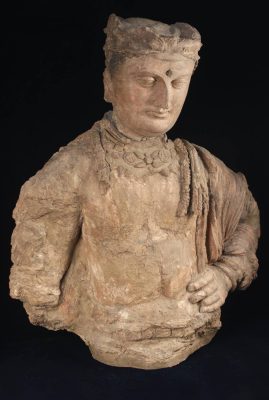
Figure of a Buddha. City temple, Dalverzintepa.

Figure of a Bodhisattva. City temple, Dalverzintepa
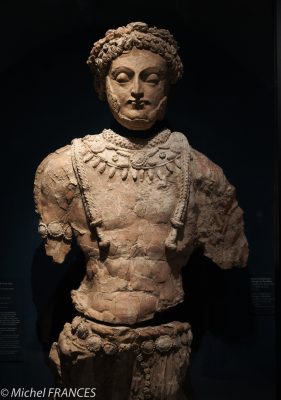
https://blog.kermorvan.fr/2023/01/13/splendeurs-douzbekistan-au-louvre/

Statue of a magnate [G. A. Pugachenkova]


Head of a prince 1st-2nd century

1st/2nd century

1st century BCE – 1st century CE
SOURCES:
- Dalverzin’s gold: the story of the find https://hill.uz/topical/118
- Exhibition “The Kushan Empire and its Contribution to the Development of World Civilization” http://art-blog.uz/archives/33431
- Pictures from the exhibition “The Kushan Empire…” https://www.facebook.com/gavkhar.vakhidova/posts/2746842882006429
- https://central-asia.guide/uzbekistan/destinations-uz/termez/denau/
- http://www.samarkandtour.com/en/attractions/istoricheskie_i_arhitekturnyie_pamyatniki_termeza/arheologicheskie_pamyatniki_surhandari_kampyirtepa_dalvarzintepa.html
- https://meros.uz/en/object/dalvarzintepa-xazinasi
- https://www.bulac.fr/sites/default/files/medias/fichiers/2022/11/DP-LOUVRE_Exposition-Splendeurs-des-oasis-dOuzbekistan.2022.pdf
- KUSHAN ART, G. A. Pugachenkova, S. R. Dar, R. C. Sharma, M. A. Joyenda in collarboration with and H. Siddiqi. https://en.unesco.org
- КУШАНСКОЕ ЦАРСТВО: ДИНАСТИИ, ГОСУДАРСТВО, НАРОД, ЯЗЫК, ПИСЬМЕННОСТЬ, РЕЛИГИИ
Э. В. РТВЕЛАДЗЕ [Ėdvard Vasilʹevich Rtveladze], Ташкент, 2019 https://legacy.uz/media/books/kushanskoe-tsarstvo.pdf - Francfort, H.-P. (2022). Les Saka-Sarmates.°In. R. Rante and Y. Lintz. Splendeurs des oasis d’Ouzbékistan. Sur les routes caravanières d’Asie centrale. Paris, Louvre éditions, éditions El Viso, 38-41. https://www.academia.edu













